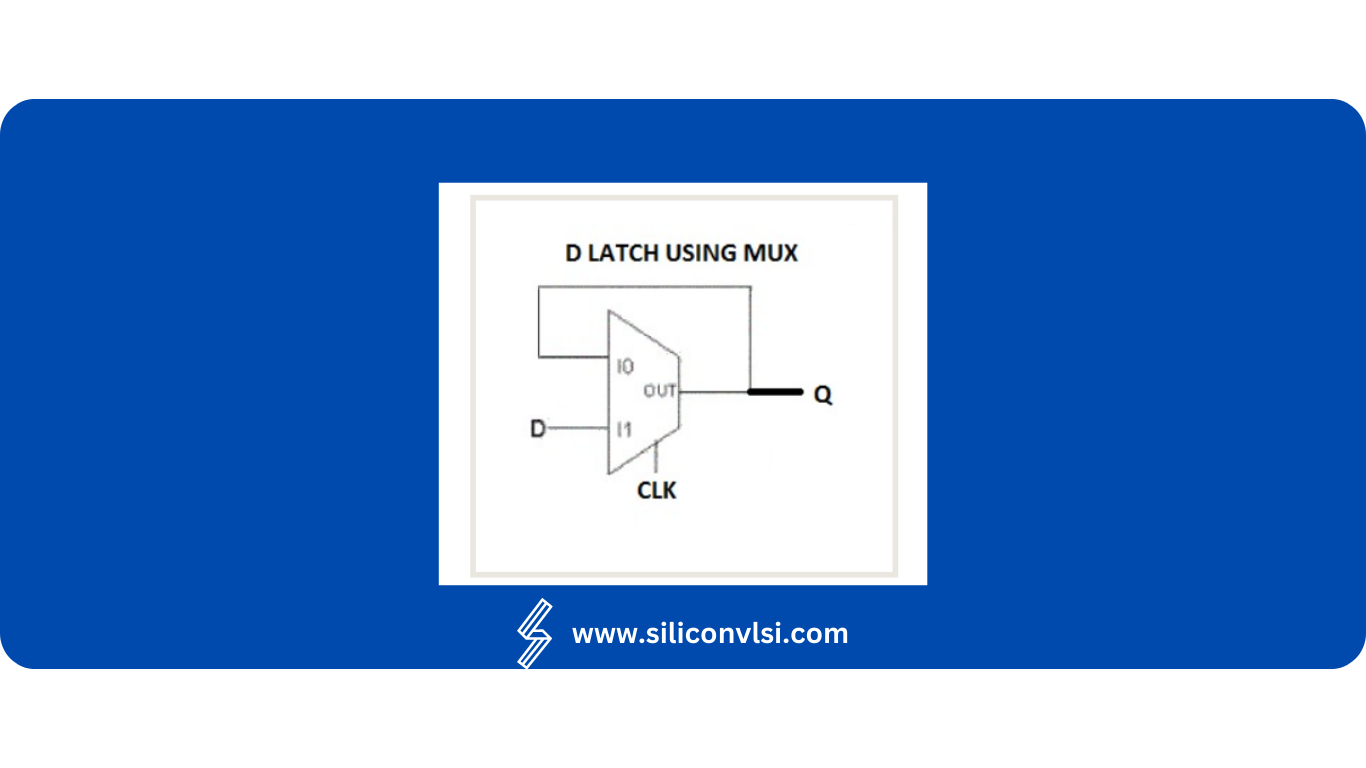D Latch Truth Tabel
| D | Enable | Q (Output) |
|---|---|---|
| 0 | 0 | Q |
| 1 | 0 | Q |
| 0 | 1 | 0 |
| 1 | 1 | 1 |
In digital electronics, a latch is a simple circuit that can store and hold a single bit of information. It is often used as a building block for more complex digital circuits. One type of latch is the D latch, which is controlled by a D (data) input and an enable input. In this article, we will explore how to design a D latch using multiplexers, which are versatile digital components that can be used for various purposes in logic circuit design.
Understanding the D Latch Before we delve into the design, let’s briefly review the functionality of a D latch. A D latch has two inputs: the D (data) input and the enable input. The D input represents the data to be stored, while the enable input controls whether the data is latched and stored. When the enable input is high (1), the D input is transferred to the latch’s output. When the enable input is low (0), the output holds its previous state, regardless of the D input.
To design a D latch using multiplexers, we can take advantage of the fact that multiplexers can act as combinational circuits with multiple inputs and select inputs. By appropriately connecting the inputs and the select input, we can create a circuit that emulates the behavior of a D latch.

Here’s a step-by-step guide to designing a D latch using multiplexers:
Start by considering the truth table of a D latch. The truth table shows the relationship between the D input, the enable input, and the latch’s output. For a D latch, when the enable input is high (1), the output is the same as the D input. When the enable input is low (0), the output holds its previous state.
We will need a 2:1 multiplexer for our design. Connect the D input to the multiplexer’s input 1, and connect the output of the multiplexer to its input 0. This creates a feedback loop between the multiplexer’s inputs.
Connect the enabled input to the selected input of the multiplexer. This ensures that the enabled signal controls the selection of inputs in the multiplexer.
Connect the output of the multiplexer to form the Q (output) of the latch. This output represents the stored value of the D input when the enable input is high.
Understanding the Design The design of a D latch using a multiplexer relies on the ability of the multiplexer to select the appropriate input based on the value of the selected input. When the enable input is high (1), the multiplexer selects the D input as the output, which means the output follows the value of the D input. When the enable input is low (0), the multiplexer selects its own output as the output of the latch, which means the stored value is maintained.
Designing a D latch using multiplexers is a practical approach to implementing this essential circuit in digital electronics. By leveraging the versatility of multiplexers, we can create a circuit that stores and updates binary data based on the control of the enabled input. Latches serve as important building blocks in various digital systems and can be further combined to construct more complex circuits.
Use of D Latch
The D latch, also known as a transparent latch or data latch, is a fundamental component in digital logic circuits. It is widely used in sequential circuits for temporary storage and signal synchronization purposes. Here are some of the main uses of a D latch:
Data Storage: The primary purpose of a D latch is to store a single bit of data. It has a single input line, known as the “D” input, which represents the data to be stored. When the latch is enabled, the input data is latched and stored internally.
Signal Synchronization: In digital systems, it is common to have signals with different timings or delays. By using a D latch, it is possible to synchronize signals by latching them at specific clock edges. This ensures that the output of the latch reflects the input signal at a precise moment in time.
Registers and Memory Elements: D latches are essential building blocks for constructing registers and memory elements. By combining multiple D latches, it is possible to create larger storage units capable of storing multiple bits of data. These units are vital for storing temporary data, intermediate results, and program instructions in microprocessors and digital systems.
Control Signal Generation: D latches are often used to generate control signals in digital circuits. By using the latch’s output as an enable signal for other components, it is possible to control the flow of data or the execution of specific operations within the circuit.
State Holding in Finite State Machines: Finite state machines (FSMs) are commonly used in digital systems to control sequential operations. D latches play a important role in FSMs by holding the current state and enabling the transition to the next state based on specific conditions or inputs.
Data Bus Interfacing: D latches can be used to interface between different components or subsystems within a digital system. They can be used to latch data from a data bus and hold it until it is processed or passed on to other components.
Level Triggering: D latches can be used to implement level-sensitive devices by connecting their enable input (often denoted as “E” or “EN”) to a constant logic level. This allows the latch to hold its output value continuously, rather than being affected only at specific clock edges.